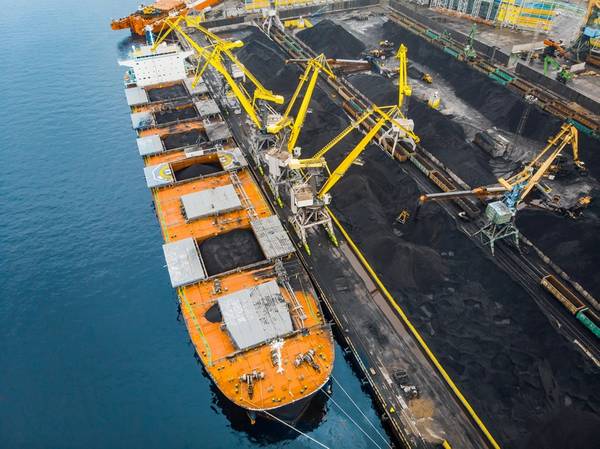
India's coal industry celebrated the return of its major conference after a three-year pandemic hiatus by presenting a bullish view of demand, rising supply from new mines and strong demand for imports.
"King coal is coming back and coming with a big bang," Anil Kumar Jha, the chairman of Jindal Power Ltd., told the Coaltrans India conference, held this week for the first time since February 2020.
The sentiment was echoed by virtually every speaker at the event, although there was a wide variety of views as to how successful India will be at ramping up coal domestic coal output, and how quickly this can replace imports.
The industry's confidence in a long and prosperous future for itself stands in contrast to India's commitment to "phase down" coal-fired power generation and achieve net zero carbon emissions by 2070.
There was no talk at all of phasing down coal at the event, rather the debate centred on just how high India's coal demand will rise, with the consensus being it will jump to around 1.4 billion tonnes per annum by 2030 from around 1 billion tonnes currently.
As is always the case, the trick is separating the hype from the reality, and also distinguishing between short-term market dynamics and long-term trends.
The reality is that India has successfully increased domestic coal output, with official government figures released last week showing production in the first 10 months of the fiscal year that started in April 2022 reached 698.25 million tons, up 16% over the same period a year earlier.
It's likely that India's full-year output in the 2022-23 fiscal year will reach a record high, although still fall short of a target for just over 900 million tons.
The question is whether Coal India, the state-controlled miner that accounts for about 80% of the country's total output, can continue to ramp up production at double-digit annual growth rates.
And even if Coal India can achieve what it has never been able to do in the past, can the railway and ports systems keep up with the increased output?
India is also betting that private mining companies will start to make a bigger contribution to domestic output as they start bringing mines to production.
Overall, the trend does appear to be for rising domestic output, but if history is any guide, it's also likely that India will fall short of its longer-term targets.
The question is by how much, and whether the country will be able to source sufficient imports at a price that its utilities can afford.
IMPORTS GAINING
In the short term India's imports of seaborne thermal coal are likely to accelerate, especially since the government invoked emergency measures last week requiring power plants that use imported fuel to operate at full capacity in order to avert potential electricity shortfalls as the summer demand peak approaches.
India's coal arrivals are already heading higher, with data from commodity analysts Kpler pointing to a rise in thermal coal imports to 10.19 million tonnes in February, up from 9.71 million tonnes in January and the most since November.
Over the longer term, the trajectory for imports will depend on how successful India is at boosting domestic coal production, and shifting volumes around the country.
It's likely that thermal coal imports may decline over the coming years, but predictions that this trade will end by 2030 are ambitious.
Where India will see increasing coal imports is in higher-grade metallurgical coal, used primarily to make steel.
India produces only small amounts of this grade of coal, also known as coking coal, and given the expected increase in steel production, it's expected that coking coal imports will rise from around 63 million tonnes a year currently to around 100 million by 2030.
There was one question that participants at the Coaltrans India event were likely to skip around, and that was whether this additional coal the industry expects to produce will actually be needed.
India is rapidly rolling out renewable energies such as solar and wind, as well as boosting hydro generation.
In the 2021-22 fiscal year some 15.5 gigawatts (GW) of renewable capacity was installed, but only 1.4 GW of new coal-fired generation.
While thermal generation still accounts for 59% of India's total capacity, the share of renewables is rising and was at 27% in March 2022, according to data from the Institute for Energy Economics and Financial Analysis.
The share of renewables is expected to rise to at least 40% by 2030, and may even climb to half of India's generation capacity.
India is building new coal-fired power plants, with data from the Global Energy Monitor showing 32 GW currently being built.
Given that each GW of generation requires around 3 million tonnes of coal annually, this implies the coming capacity additions will only need another 100 million tonnes, well below the 500 million tonnes extra the industry believes it will deliver by 2030.
There are other coal users, such as cement producers, but it's unlikely they will need massive new volumes.
Overall, it appears the positive mood of India's coal sector is justified, especially in the short term. But their vision of massive increases in output and demand for decades to come may yet prove overly optimistic.
(Source: Reuters; Editing by Stephen Coates)



